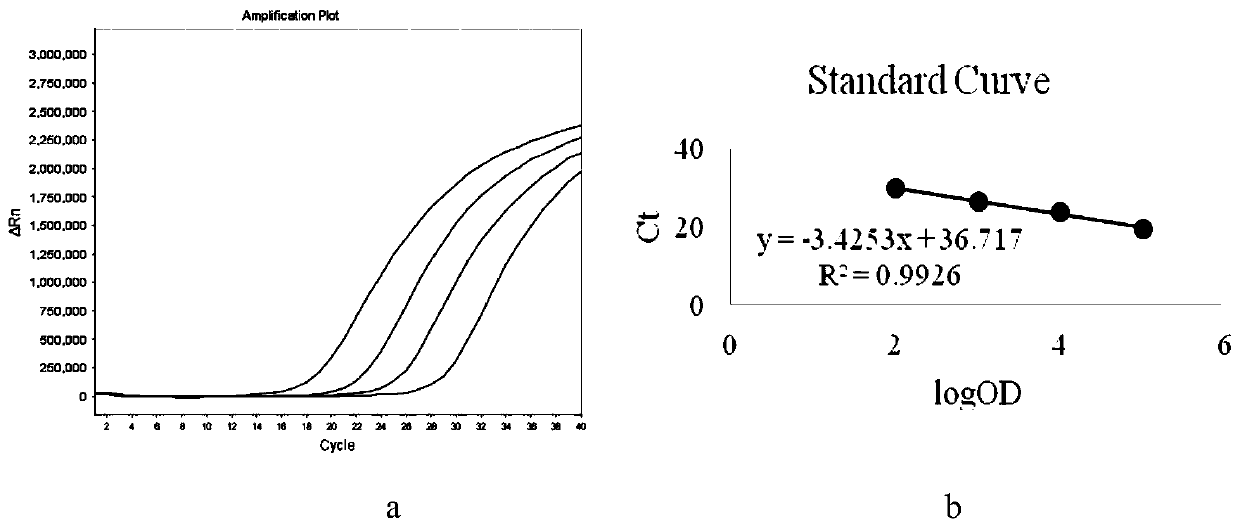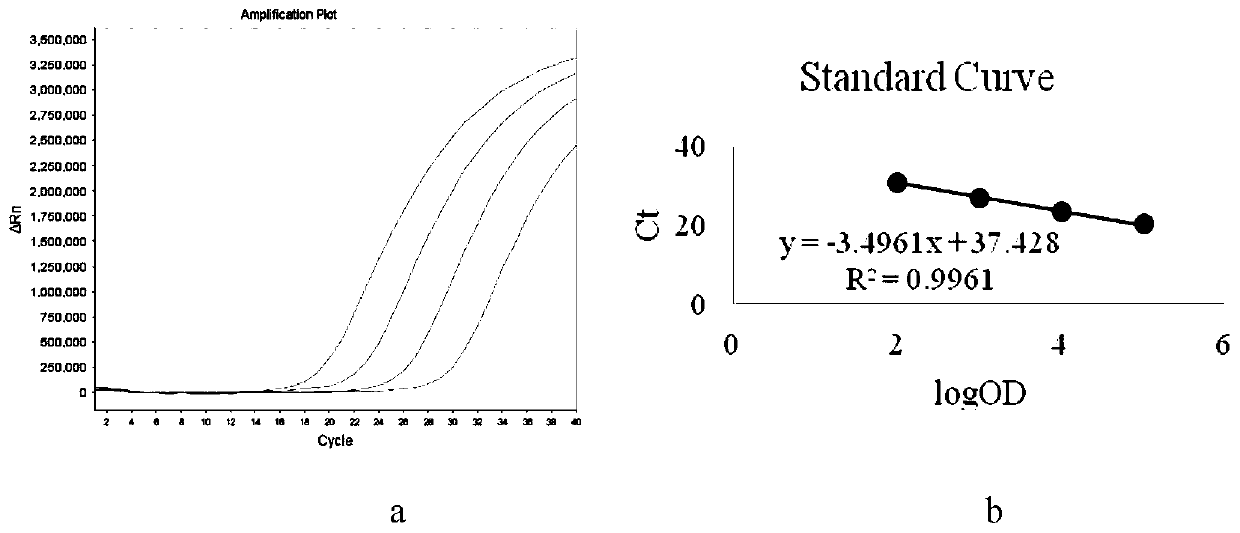Multiplex PCR detection method for simultaneously detecting various kinds of bacteria and mycoplasmas and application thereof
A detection method and mycoplasma technology, applied in the field of genetic engineering, can solve the problems of difficulty in determining accuracy, low sensitivity and high cost, and achieve the effects of high sensitivity, fast detection and simple operation
- Summary
- Abstract
- Description
- Claims
- Application Information
AI Technical Summary
Problems solved by technology
Method used
Image
Examples
Embodiment 1
[0078] (1) Extraction of bacterial and mycoplasma genomic DNA
[0079] To collect the infected samples from the subjects to be tested, commercially available bacterial and mycoplasma genomic DNA extraction kits were used, and the specific operation process was carried out according to the instructions.
[0080] (2) Primer design
[0081] Acinetobacter baumannii, Proteus mirabilis, Staphylococcus epidermidis, Streptococcus pneumoniae, Enterococcus faecalis, Pseudomonas maltophilia, Pseudomonas aeruginosa, Pseudomonas cepacia, Escherichia coli, Corresponding sequences from Neisseria meningitidis, Klebsiella pneumoniae, Staphylococcus hominis, Legionella pneumophila, Staphylococcus aureus, Haemophilus influenzae, MRSA, Mycobacterium tuberculosis and Mycoplasma pneumoniae , design amplification primer probes (Table 1), to ensure that each pair of primers and corresponding probes can amplify the corresponding pathogenic microorganisms, and do not amplify non-specifically with othe...
Embodiment 2
[0093] Specificity experiment:
[0094] Bacteria Genomic DNA Extraction Kit was used to extract Acinetobacter baumannii, Proteus mirabilis, Staphylococcus epidermidis, Streptococcus pneumoniae, Enterococcus faecalis, Pseudomonas maltophilia, Pseudomonas aeruginosa, Pseudomonas cepacia, Escherichia coli Escherichia, Neisseria meningitidis, Klebsiella pneumoniae, Staphylococcus hominis, Legionella pneumophila, Staphylococcus aureus, Haemophilus influenzae, MRSA, Mycobacterium tuberculosis, and pneumonia For mycoplasma DNA, the operation steps were carried out according to the instructions provided with the DNA extraction kit. The detection channels are divided into five groups, and the grouping conditions are the same as those in Table 2. Taking the first group as an example, add corresponding primer probes to the wells in the same row of the 96-well plate (only the 4 primer probes of the first group are added to each tube). , in this way, rows 1-5 correspond to the primer prob...
Embodiment 3
[0101] Sensitivity experiment
[0102] 18 kinds of bacteria and mycoplasma (pathogenic microorganism) DNA prepared in embodiment 2 are carried out tenfold serial dilution, 10 2 -10 5 copies / ul, using the kit provided by the invention to amplify the above-mentioned diluted samples respectively, the detection sensitivity results of 18 kinds of pathogenic microorganisms Figure 1-Figure 18 As shown, among them, Figure 1-Figure 18 The R of the standard curve of the detection results of 18 kinds of pathogenic microorganisms 2 The values are 0.9926 (Acinetobacter baumannii), 0.9961 (Enterococcus faecalis), 0.9988 (Escherichia coli), 0.9962 (Klebsiella pneumoniae), 0.9862 (Proteus mirabilis), 0.9999 (Pseudomonas aeruginosa ), 0.9983 (Pseudomonas cepacia), 0.9938 (Pseudomonas maltophilia), 0.9867 (Streptococcus pneumoniae), 0.9921 (Staphylococcus epidermidis), 0.9874 (Neisseria meningitidis), 0.9876 (Staphylococcus hominis) , 0.9963 (Legionella pneumophila), 0.9900 (Staphylococ...
PUM
 Login to view more
Login to view more Abstract
Description
Claims
Application Information
 Login to view more
Login to view more - R&D Engineer
- R&D Manager
- IP Professional
- Industry Leading Data Capabilities
- Powerful AI technology
- Patent DNA Extraction
Browse by: Latest US Patents, China's latest patents, Technical Efficacy Thesaurus, Application Domain, Technology Topic.
© 2024 PatSnap. All rights reserved.Legal|Privacy policy|Modern Slavery Act Transparency Statement|Sitemap



